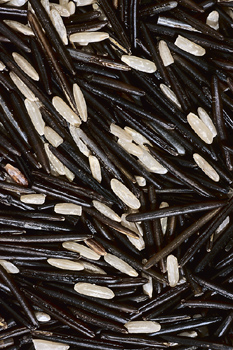How to Grow Rice
Rice is difficult to grow in your backyard, but it’s worth knowing how to grow rice, in case you want to experiment with rice farming. In Asia, it’s frowned on to waste even a single grain of rice, because that would dishonor the farmers, who have to spend many hours a day in the difficult maintenance and harvesting of rice. Watch any samurai movie and you’ll see how rice is treated as sacred by farmers, raiders and ronin alike.
Growing rice in your own home may not be quite so sacred to you, but if you’re going to farm rice, at least learn how to do it right. Even then, your rice production might not yield enough to serve a family meal, unless you grow buckets upon buckets of rice plants. Rice production requires space and soil, which might account for why the land is so sacred in those movies, too.
Learn how to grow rice so you can appreciate the labor-intensive and time-consuming process of rice growing. Keep in mind before you get into this that you’re buying into a significant amount of work.
Rice Options

How to Grow Rice
There are different types of rice to consider: paddy rice, deep-water rice, rain-fed lowland rice and upland rice.
Paddy rice growth is controlled by the farmer, whereas deep-water rice grows near river and other water banks and depends largely on the weather.
Lowland rice thrives in monsoonal regions where ridges are built into the land in order to retain water after the rain. Upland rice is grown in areas of frequent rain on slopes.
Most people grow home-grown rice in large buckets of water, with little dirt and a whole lot of sunlight.
What You Will Need to Grow Rice in Your Home
One upside to rice farming is that growing rice doesn’t require many materials: it just takes a long time to grow and harvest. Usually, your local grocery store’s unprocessed long grain brown rice, such as basmati and jasmine, can be grown in your home.
If you’re especially worried about how your rice will turn out, purchase rice seeds from your local nursery or gardening supply store. Planting rice also requires soil or dirt. Finally, you will need large, clean buckets in which to grow your rice.
Growing Your Rice

How to Grow Rice
Put 5 to 7 inches of soil in each bucket (slight larger than 1 hand deep) and place one handful of rice on top of the dirt. Cover the dirt and rice with water so that the water rises about two inches above the top of the soil. Keep your bucket or buckets in a sunny area, so the rice can thrive in a warm, sunny climate.
Check your water levels regularly and add water, if necessary. When your rice plants grow beyond 6 inches, increase your bucket level to 4 inches above the top of the soil. Let the water slowly evaporate over time, so that your plant has room to grow and be harvested.
When your plant transforms from a green to a gold color, it’s a signal to harvest the rice. Your plant has to grow for approximately 4 months, before it can be harvested.
After you harvest the rice, wrap up the stalks inside a newspaper and let them sit in a warm place for a couple of weeks. Remove the shells from the rice and let the rice simmer in low heat.
Why Grow Rice?
Learning how to grow rice is a valuable long-term activity for you and your family. Don’t try planting rice in your own yard, because it’s not recommended, unless you have a large field and can afford to lose the space. Rice is grown in small floods of water, because these floods keep rice naturally moist, without needing constant irrigation.
The combination of a great deal of water and warmth from the sun help develop the rice plants and cause rice to mature faster than it otherwise would. Growing rice in a few buckets let’s you control water and sunlight, without you having to worry about maintaining the actual terrain.
Growing rice on your own or with your family teaches everyone about the patience and art of rice-growing, as well as teach you to appreciate the wide variety of food available to you on a daily basis. Once you and your family have studied how to grow rice, go back and watch Akira Kurasawa’s Seven Samurai, or if you have kids, consider the anime based on the same story, Samurai 7, now that your appreciates how much time and trouble goes into rice production.
